-
Survey Results
Posted by SARAH JACKSON on 9/15/2019 2:30:00 PMOur Institute for Innovation team has been busy since our last blog update! School has been in session now for several weeks and we have enjoyed getting to be back with our students.
As a part of our back to school professional development in August, we had the opportunity to share a little more about our sensory rooms with our faculty and staff through two, one-hour workshops. Teachers were given the option to sign-up for these workshops where they were given time to explore the rooms, the equipment in them, ask questions and give any immedaite feedback. From this, our I for I team also developed a survey for the entire faculty and staff to participate in so we could receive a wider range of feedback. We were fortunate enough to hear from at least one person on every team, including grade-level teachers, support staff and specials teachers. Other data results are below:
1. Based on our school beliefs, which of these do you expect to accomplish utilizing the multisensory rooms?
- 59% - An emotionally and physically safe environment encourages risk-taking, critical thinking, and collaboration
- 29% - Student-centered conversations and student involved decision making enhance learning and support diverse learning styles.
- 12% - Effective communication builds trust, cultivates positive relationships, and promotes mutual respect.

2. On a scale of 1-5, how would you rate your level of knowledge when it comes to our sensory rooms at CBS?
- 50% - 3 (some knowledge)
- 21% - 2 (limited knowledge)
- 21% - 4 (knowledgeable)
- 8% - 5 (very knowledgeable)
- 0% - 1 (no knowledge)
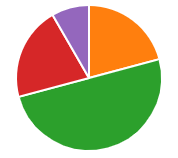
3. On a scale of 1-5, how likely are you to use our sensory rooms?
- 46% - 4, somewhat likely
- 38% - 5, very likely
- 8% - 2
- 8% - 3
- 0% - I will not use these rooms
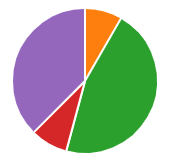
4. What are you most excited about when it comes to the addition of these rooms?
Comments included: safe environment, an outlet, available to ALL students5. What barriers do you anticipate when it comes to these rooms being utilized by ALL students at CBS?
Comments included: scheduling, staff resistance, access options for older students, logistics, having structure and order6. What supports do you feel you will need going forward?
Comments included: ways to sign up, ideas on how to use the rooms, understanding, clear expectations, coverage for students who may need to use the rooms 1:1Our team is meeting again this week to dive deeper into the survey data and discuss next steps! We are excited about moving forward!
-
Summer Small Group - Sensory Rooms
Posted by LIZZIE VANSANT on 7/24/2019 1:30:00 PMUpdate: Our original proposal team has added 3 new members: Reed Bowers, Abby Spurlin, and Jenny Mangham. These members are at New Teacher Orientation this week but have been vital participants in developing these spaces.
We’re coming down to the wire and starting to feel the pressure of the beginning of the year, getting our classrooms ready, and getting our sensory spaces ready. We started today setting up our Movement Room. The morning consisted of rearranging furniture to accommodate for the new purchases that will be coming in over the next couple of days. Here are some pictures of our current space:
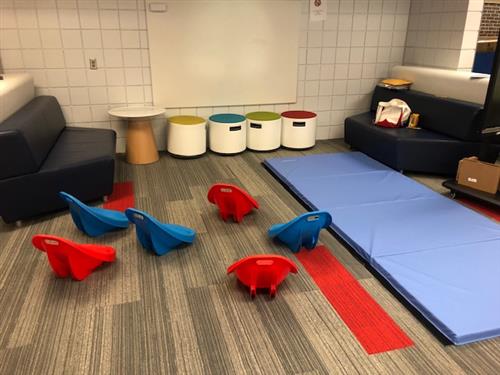
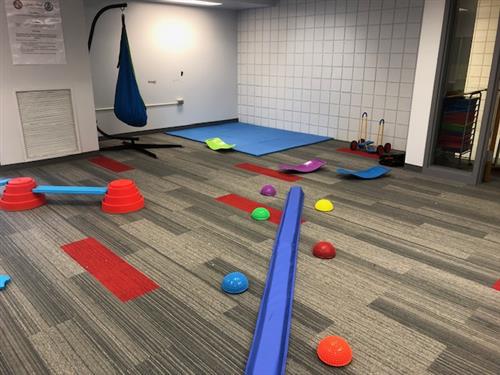
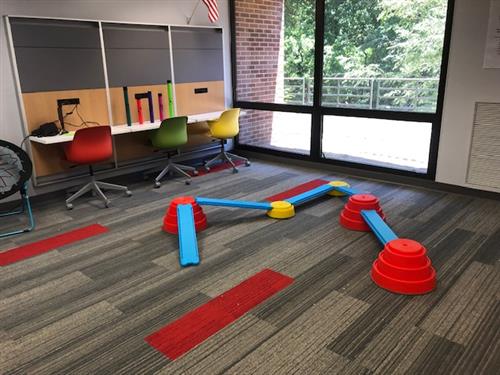
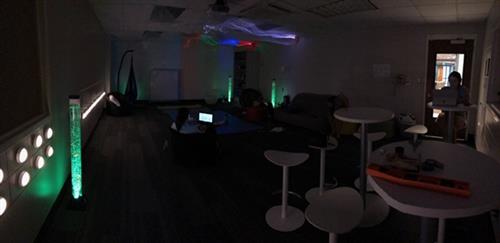
We moved over to the Snoezelen Room and created a Tens-Frame and Alphabet Strip with the touch lights that we ordered. We anticipate that teachers will be able to use this for whole group or small group instruction. We’re ordering more touch lights to create a lower-case set of letters for building CVC words. We also are planning on ordering additional touch lights for digraphs, diphthongs, and replacements. An additional space will be available to create sentences with both uppercase and lower-case letters. We’re working on documents that will highlight some activities using the alphabet touch lights relating to literacy including phonemic awareness, alphabetic principal, word building, and sentence composition.
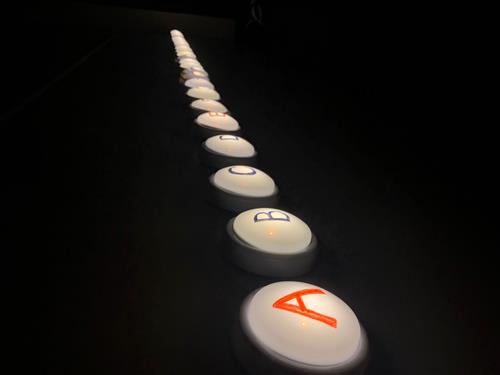
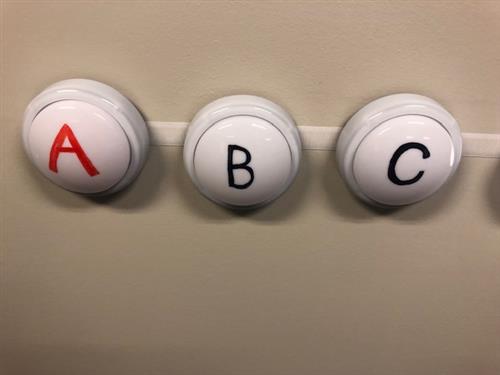
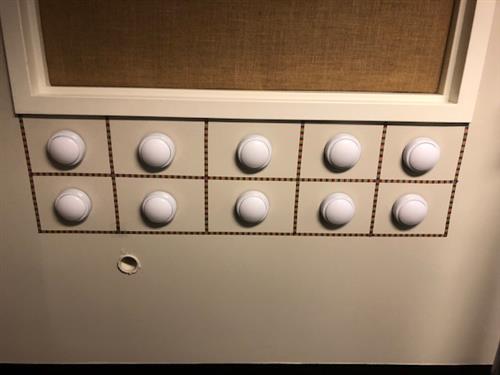
Expectations - We’re working on creating expectations for the rooms and professional development for teachers. Today, we’ve had several teachers come through and provide us with suggestions for logistical things to think through. We found some visual supports that we will be able to provide to teachers and hang up in the room as an overview.
Calendar – We’re considering some options for a calendar for both rooms. We’ve thought that it would be good to set-up an Outlook calendar that is shared amongst the faculty and would be accessible to teachers throughout the year. We ran into some conflicting opinions about whether or not a whole-group, small-group, or individual student would be a scheduling priority in the room. We decided that it would first be dependent on the calendar and who reserved time, and then lean back to the whole-group since the rooms are for the whole building.
Signs - We’re in the process of creating signs to display on the outside of the rooms when they will be in use or are available.
As the majority of our team has shifted roles, we’re continuing to think through professional development for our staff, especially at the beginning of the year. Our goal is to orient teachers to the sensory-friendly environments and help them create a plan to use the rooms. At the beginning of our professional development training, we’re planning on creating a survey to gather baseline data from the teachers and evaluate their needs before beginning the training. This data will be useful throughout the year to determine what professional development plans we need to develop for teachers to best utilize the space.
Our next steps are finishing installation of the rooms and begin preparing our professional development session for the staff at one of our back to school meetings.
-
Summer Snoezelen Setup
Posted by HANNAH KENNEDY on 6/26/2019 2:45:00 PM

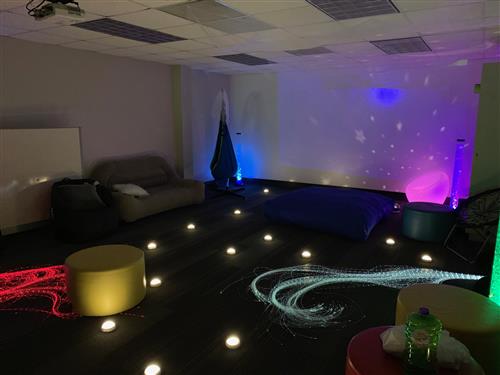
We've had so much fun working on our sensory rooms this summer! The team is anxiously awaiting the remainder of our materials, but we are off to a great start! Here are some before and after pictures of our progress!
-
Planning Day
Posted by SARAH JACKSON on 4/19/2019 1:40:00 PMCurrent Status:
As the end of the year begins to wrap up, we are eager to begin constructing our sensory spaces for our students use. Here is a “before” image of the 2 spaces:
Action Room - “before”:
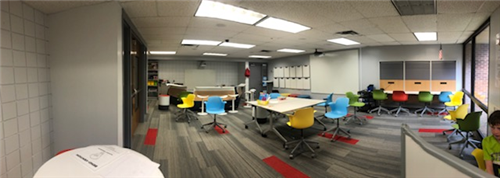
The location for the Action Room is in the current space known as the Bend’s Den. There are several appealing aspects of this room that will be beneficial and can be carried over to the Action Room. We are planning on keeping the projector and smart board. In the process of ordering items, we are feeling a little bit overwhelmed with the amount of space that we have and how to best utilize each part of the room so that it flows well for the students. We want to be very intentional in both spaces of how we lay out our materials. We looked at what is already in the rooms and how we could use them in our space. We are thinking about a space to keep our cleaning supplies and things that we have not thought about before starting to set up these areas. We visited another clinical setting that had a similar sensory room. They recommended an area to keep cleaning supplies ready for each day. Our main topic of discussion today was how to get baseline data before the end of this school year from our teachers and students about their knowledge of the sensory room, its purpose, and how to integrate it into instruction.
Snoezelen/Calming Room “before”:


Data Collection Ideas:
The team is discussing methods of collecting data. We are brainstorming collecting end of the year student and teacher awareness data. This baseline data will help us gear our professional development for teachers and target areas for monitoring use of the room with various grade-levels.
Next Steps:
The team is looking to meet this summer to research methods to train staff about use of the sensory rooms and integration of teaching methods within the room.
Professional Development ideas for staff:
-present research on sensory integration
-provide sample lessons and ideas for staff
-model appropriate lessons with materials in the classroom.
-discuss data-recording sheets for monitoring room/supply usage
-
Planning Meeting
Posted by HANNAH KENNEDY on 3/1/2019 1:00:00 PMAs we begin our path, we would first like to thank Mountain Brook Foundation and the grant team for the support and financial commitment to power our dream. Through the support of our administration, fellow colleagues, and the grant team we can provide a Whole Brain experience for every child at Cherokee Bend Elementary School.
Together, our team has the privilege of serving students across all grade levels and exceptionalities. At Cherokee Bend, we are so grateful to serve our students through an inclusive model within the general education classroom. We are thrilled to begin this journey through partnership with all students, faculty, and staff at CBS!
Our Team:
Kelsey Church, Hannah Kennedy, Sara Katherine Janecky, Sarah Jackson, Lizzie Vansant, Amy Dern
Purpose:
Create a multi-sensory environment that is designed to help children use their bodies and environment to calm and organize themselves. The multi-sensory rooms and path will work to improve students’ mental health and confidence to give them more independence in their social, behavioral, and academic abilities.
How do we process information from the world around us?
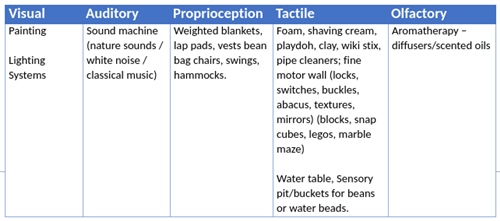
What does the research say about the whole brain experience?
“The idea for a controlled sensory environment for use in therapy goes back to the 1970s, when it was developed in the Netherlands. As a therapeutic tool, it emphasizes client control over their own conditions by allowing them to adjust the various light, sound and visual sources in a safe, comfortable space. As it prioritizes non-verbal interaction, it can be very good for people profoundly effective for children with sensory deficits. This environment enables stronger engagement as it is not just visually appealing, but allows one to feel in control, cared for, safe, and focused.”- "Studies have found that a sensory room can reduce self-harm by 40%, if used correctly," says Iris' co-founder and executive director Ayman Arandi.
- "So it can help a lot in aiding the healing process."
- “If we want today’s children to be prepared for the new world of work, we need to stop using Industrial Age teaching strategies and structures. Instead of cranking out the next batch of compliant workers, we need to help spark the next generation of doers, thinkers, and leaders!” – Mike Anderson
- “Today’s offices demand a variety of workspaces that inspire and engage people. Il Prisma’s research shows that engaging one or more of the senses can improve concentration and learning. However, when designing for the senses, it’s also important to factor in the type of work being done in a space so that productivity and the sensory environment aren’t fighting each another. Anything from adding a few plants to designing an entire office around the senses works to improve employee wellbeing.”


